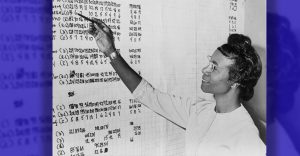Opinion
Real Change Requires Real Change
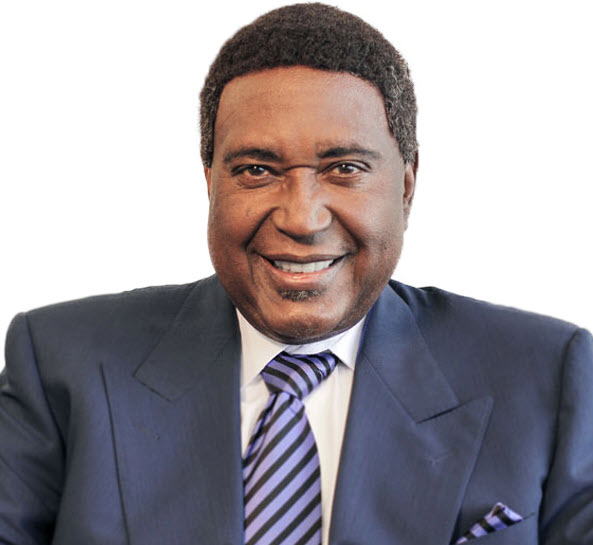
Police Use of Force actions questioned
In his 1999 book, “Blue vs. Black,” attorney John Burris wrote, “In the past, our ideals about what type of personality was best suited for police work tended to favor boldness, physical condition, skill with weapons, and the willingness to be proactive in crime control. These criteria are certainly necessary, but their emphasis, to the exclusion of all other qualities, has left most cities with police forces that excel in force and are ill-equipped for mental combat.” Burris opined that, “Deescalation … must supplant the macho police reaction to any perceived challenge to authority.”
Burris’ book was published only a few years before he represented Delphine Allen in his lawsuit against the Oakland Police Department (OPD).
This litigation led to the creation of the Negotiated Settlement Agreement (NSA), a framework of federal oversight that began in 2003 and continues to the present.
Among other topics, the NSA has specific “tasks” that address investigations of police misconduct, which routinely involve claims about police use of force.
The 63rd Report of the Federal Monitor was published on Aug.19, 2019, and it appears that Mr. Burris’ 20-year-old critiques are as persuasive today as they were when they were published.
The City of Oakland recently advertised an apparent decrease in the use of force by members of the OPD.
According to City reports, use of force dropped 75 percent from 2012 to 2017. City officials claimed that this change was due to a variety of factors, such as better training, new policies, and the broad implementation of body-worn cameras (BWCs) within the department.
However, the Federal Monitor (and the OPD’s internal auditor) took a closer look at the underlying reporting, and their efforts to confirm the cause of the celebrated drop in police use of force led to the disturbing conclusion that the OPD was under-reporting the force it had actually been using.
The Monitor’s conclusion was challenged by the City, which argued that confusion about the “low ready” position (a position where an officer draws their firearm and points it at a downward angle without specifically targeting a subject) was largely responsible for unreported uses of force.
Further investigation by the Monitor did not support this argument, as more than half of the BWC recordings reviewed by the Monitor did not involve the pointing of firearms.
An OPD internal investigation found that officers also failed to report “weaponless” uses of force such as bent-wrist and arm-bar control holds, and strikes, kicks, leg-sweeps, and takedowns.
More alarming, the internal investigation found that an unusually high percentage of unreported uses of force involved African American subjects, that four specific OPD squads had repeatedly failed to report uses of force, and that many officers who were members of these squads were under “supervisory monitoring” for past disciplinary issues.
The City has asserted that the reviewed sample size is too small to draw statistical conclusions. This point is well taken, but it should also be noted that the police department’s internal auditor found that police officers have been failing to activate their BWCs, or prematurely deactivating their cameras.
This is a troubling finding for a tool that is supposed to ensure police accountability.
History appears to be repeating itself, and we cannot afford to ignore the lessons of the past.
We have a tool now that did not exist in 1999. We have a voter-created Police Commission, and we need to ensure that this Commission is empowered to make painful, necessary, and long-overdue changes in police procedure and culture. The Oakland Police Commission is our city’s best chance at establishing true community oversight over a troubled police department. They deserve our full support, and a true chance to create a culture of accountability.
Activism
Oakland Post: Week of November 26 – December 2, 2025
The printed Weekly Edition of the Oakland Post: Week of November 26 – December 2, 2025
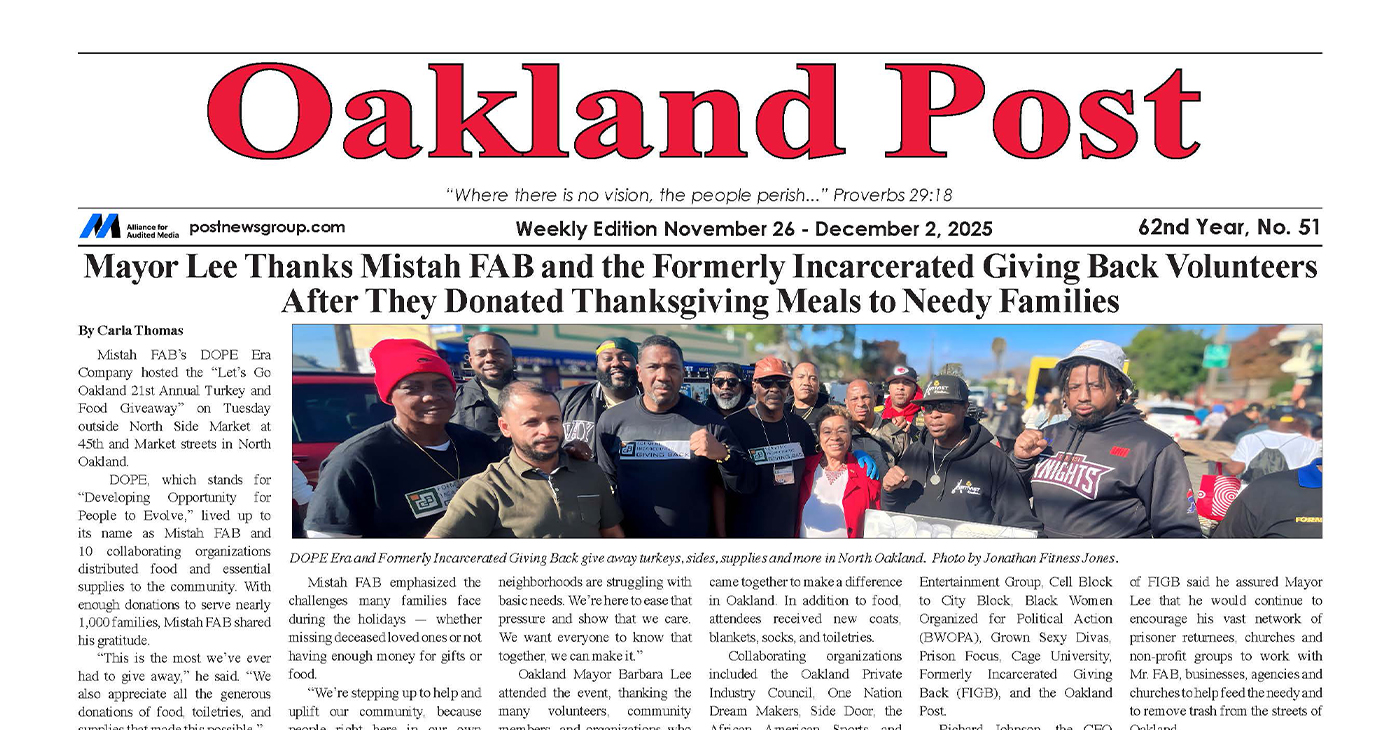
To enlarge your view of this issue, use the slider, magnifying glass icon or full page icon in the lower right corner of the browser window.
Activism
Oakland Post: Week of November 19 – 25, 2025
The printed Weekly Edition of the Oakland Post: Week of November 19 – 25, 2025
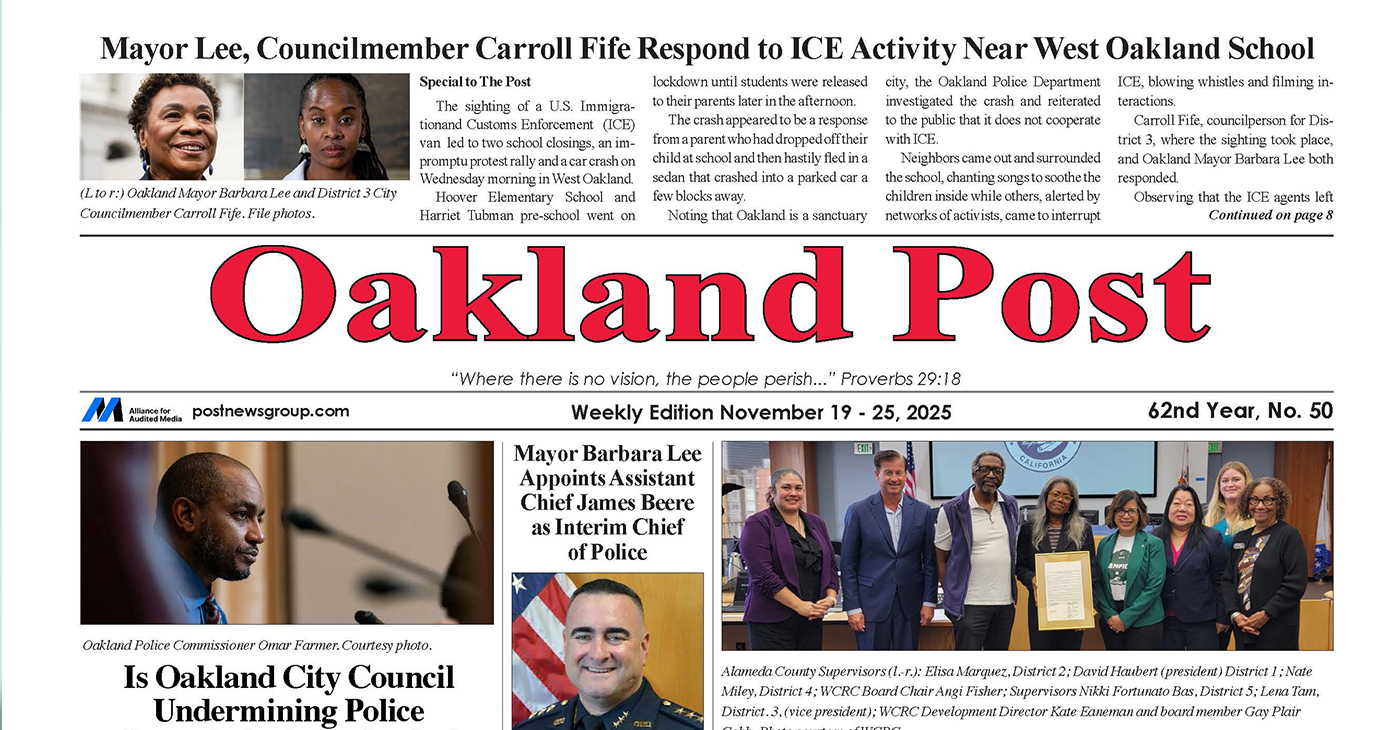
To enlarge your view of this issue, use the slider, magnifying glass icon or full page icon in the lower right corner of the browser window.
Activism
Oakland Post: Week of November 12 – 18, 2025
The printed Weekly Edition of the Oakland Post: Week of November 12 – 18, 2025

To enlarge your view of this issue, use the slider, magnifying glass icon or full page icon in the lower right corner of the browser window.
-
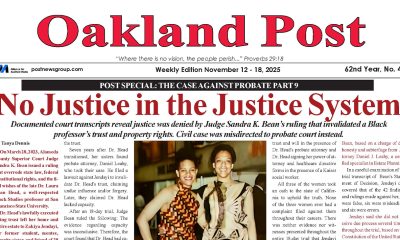
 Activism4 weeks ago
Activism4 weeks agoOakland Post: Week of November 12 – 18, 2025
-

 Activism3 weeks ago
Activism3 weeks agoIN MEMORIAM: William ‘Bill’ Patterson, 94
-

 Activism4 weeks ago
Activism4 weeks agoHow Charles R. Drew University Navigated More Than $20 Million in Fed Cuts – Still Prioritizing Students and Community Health
-

 Bay Area4 weeks ago
Bay Area4 weeks agoNo Justice in the Justice System
-

 #NNPA BlackPress3 weeks ago
#NNPA BlackPress3 weeks agoLewis Hamilton set to start LAST in Saturday Night’s Las Vegas Grand Prix
-

 #NNPA BlackPress2 weeks ago
#NNPA BlackPress2 weeks agoBeyoncé and Jay-Z make rare public appearance with Lewis Hamilton at Las Vegas Grand Prix
-
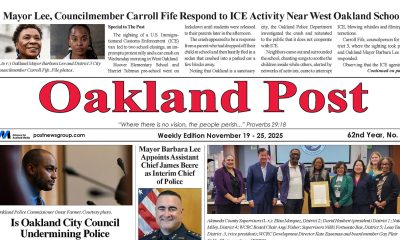
 Activism2 weeks ago
Activism2 weeks agoOakland Post: Week of November 19 – 25, 2025
-

 #NNPA BlackPress4 weeks ago
#NNPA BlackPress4 weeks agoThe Perfumed Hand of Hypocrisy: Trump Hosted Former Terror Suspect While America Condemns a Muslim Mayor

